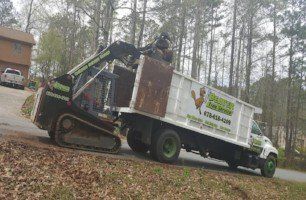Recognizing the Significance of Tree Conservation and Preservation Practices in Urban Areas
In the dynamic landscape of city atmospheres, trees usually stand as silent guardians, providing a wide range of advantages that expand much beyond their visual allure. As we explore the intertwined fabric of ecological, social, and economic benefits that metropolitan trees provide, it ends up being evident that their conservation is essential for the health of present and future generations.
Ecological Advantages of Trees in Cities
Trees in city areas play an important role in offering different environmental benefits, adding to the general wellness of city occupants. One significant benefit is the renovation of air high quality. Trees function as all-natural filters, taking in toxins such as carbon monoxide, sulfur dioxide, and nitrogen dioxide, and releasing oxygen right into the environment. This procedure helps decrease the focus of dangerous gases, making the air cleaner and much healthier for citizens.

Furthermore, trees contribute to water management by minimizing stormwater drainage and soil disintegration. In general, the environmental benefits of trees in cities are necessary for developing livable and lasting metropolitan settings.
Social Significance of Urban Tree Preservation
In modern urban landscapes, the preservation of trees holds considerable social value for cultivating area well-being and boosting quality of life. Urban tree conservation plays a vital duty in producing rooms for social communication and area involvement. Trees supply meeting place for people, such as parks and eco-friendly locations, where neighborhoods can collaborate for recreational activities, get-togethers, and leisurely strolls. The presence of trees in city settings has been connected to minimized levels of tension, boosted psychological health and wellness, and boosted sensations of health among citizens. Furthermore, trees contribute to the looks of neighborhoods, producing visually appealing environments that enhance the overall livability of metropolitan locations.

Economic Worth of Tree Preservation
The preservation and conservation of urban trees provide substantial financial benefits that add to the general monetary health of cities and communities. Urban trees provide a wide array of economic advantages that positively influence regional economic climates.
Additionally, trees play a vital role in reducing stormwater overflow and alleviating the impacts of flooding, which can lead to expense financial savings for cities in regards to infrastructure maintenance and repair. Urban trees likewise contribute to enhanced air high quality by releasing and taking in contaminants oxygen, causing possible financial savings in health care prices associated with breathing ailments. By spending and identifying in the financial worth of tree conservation, cities can promote sustainable development, improve lifestyle, and develop more durable metropolitan atmospheres.
Strategies for Lasting Urban Tree Monitoring
A detailed approach to sustainable urban tree management involves integrating diverse methods that focus on lasting ecological wellness and community well-being. Executing tree supplies and assessments is vital to understand city tree populaces, their health, and upkeep requirements. Regular pruning, watering, and mulching are important practices to ensure tree vigor. Moreover, taking on tree planting programs that focus on native and climate-resilient varieties can enhance metropolitan biodiversity and sustainability.
Community engagement plays an essential duty in sustainable city tree management. Educating residents about the benefits of trees, organizing tree growing events, and involving volunteers in tree treatment activities cultivates a feeling of possession and stewardship. Partnership in between city government, ecological organizations, and residents is key to establishing and applying effective tree monitoring plans.
Buying green facilities, such as environment-friendly roof coverings and metropolitan forests, can offer numerous advantages, including improved air quality, stormwater monitoring, and metropolitan heat island mitigation. tree removal. Incorporating trees into urban preparation and style procedures guarantees that trees are valued as necessary parts of a resilient and healthy city atmosphere
Neighborhood Participation in Tree Conservation
Neighborhood participation is a basic element in cultivating lasting metropolitan tree click this link monitoring methods and guaranteeing the long-term health and wellness and conservation of city tree populaces. Engaging the area in tree conservation initiatives can cause raised recognition, admiration, and stewardship of trees within urban view publisher site areas. When homeowners actively take part in tree maintenance, planting, and preservation initiatives, they develop a sense of possession and satisfaction in their neighborhood setting.
Neighborhood involvement additionally promotes social cohesion and collaboration amongst homeowners, local authorities, and environmental organizations, cultivating a common duty for urban tree preservation. By arranging tree planting occasions, educational workshops, and volunteer possibilities, areas can interact to enhance the metropolitan tree cover and create greener, much healthier cities. Furthermore, entailing homeowners in decision-making procedures regarding tree administration makes certain that diverse viewpoints and regional expertise are thought about, resulting in much more sustainable and effective conservation methods. Tree service guilford ct. Ultimately, neighborhood participation plays a critical role in structure growing and resistant urban woodlands for future generations to delight in.
Final Thought
In verdict, metropolitan tree preservation and preservation practices play a crucial role in improving the environmental, social, and financial well-being of cities. By recognizing the value of trees in urban locations and executing lasting management approaches, areas can enjoy the countless benefits that trees offer. It is vital for stakeholders to actively get involved in tree conservation initiatives to make certain a greener and much healthier city environment for future and current generations.
